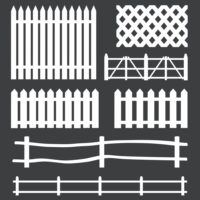No Offense, but Know a Fence before You Repair or Replace it

Good fences make good neighbors, or so the saying goes. Having a sturdy, attractive fence in place can increase your home’s value, help protect you from a home invasion, and also help secure your property rights by firmly establishing the boundary of your property. If you are new to home ownership or simply haven’t thought about it before, building or repairing a fence is not as simple as it seems. There are your neighbors to consider, rules from your homeowner’s association or subdivision, and even local and state laws that can be very specific about what you can and can’t do when it comes to fences. Let’s take a look…
Everyone wants to make laws about fences
When it comes to laws governing fences, you have many layers to consider, from the state all the way down to your local neighborhood. In general, here are the levels of legislation you may encounter and what they typically control:
State laws –
In rural areas, state laws are focused on the keeping of livestock, and liability when they get away. These laws generally come in two flavors: open range and closed range. In urban areas, state laws tend to focus on property line or boundary fences. For instance, California state law sets out the obligation of neighbors to maintain boundary fences, requiring prior notice to the neighbor of a proposed fence repair or replacement, and providing guidelines regarding when costs are shared and when they are not. State laws may also address the issue of spite fences, when a homeowner erects a fence solely to annoy or harass a neighbor. Not very neighborly, is it?
Local ordinances –
Cities, counties and municipalities are likely to have laws and regulations governing issues such as fence height, how far fences must be set back from the street or public property, materials that can be used, fence maintenance, and the use of dangerous fences (barbed wire, electrified fences). Check the laws in your locality, but height limits for artificial fences are typically four feet in the front yard and six feet in the back, and five to eight feet for natural fences (fences made from trees, bushes, etc.) Permits may also be required before constructing or modifying a fence. For example, Palm Beach County, Florida requires a permit to build or change a fence, except for minor repair or exact replacement of a permitted fence up to $1,000 fair market value, excluding pool barriers. Fences that violate the law may be allowed to stand if they predate the applicable law and are grandfathered in, or if the fence builder obtained a variance at the time the fence was built.
CC&Rs –
Many homes are located in planned unit developments or covenanted communities, where too many aspects of their home ownership are governed by a homeowners’ association (HOA) and its accompanying Covenants, Conditions & Restrictions, commonly referred to as CC&Rs. HOAs will likely have rules governing fence height and material, and may go so far as to dictate the style or appearance of allowable fences. For instance, the CC&Rs for the Sun City HOA in Arizona have special rules requiring wrought iron above a certain height for fences on property bordering golf courses, to ensure an unobstructed view of the golf course from the home.
That’s all the time we have for now. Check back next month when we take a look at the thorny issue of who pays for construction, repair and maintenance on shared fences.



